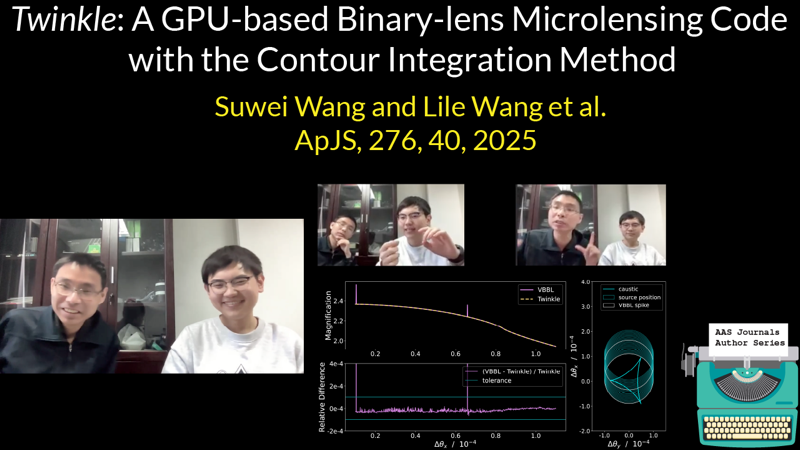Recently, Lile Wang(Assistant Professor)and Suwei Wang (PhD student), from the Kavli Institute for Astronomy and Astrophysics (KIAA) in Peking University, were interviewed by Professor Frank Timmes, deputy editor of the American Astronomical Society (AAS) journals. The interview discusses the team’s paper titled: Twinkle: A GPU-based Binary-lens Microlensing Code with the Contour Integration Method, published in The Astrophysical Journal Supplement Series (ApJS). Professor Subo Dong from the Department of Astronomy at the School of Physics also served as a co-corresponding author of this study.

During the interview, Suwei Wang elaborated on the scientific context of using gravitational microlensing to detect exoplanets, particularly emphasizing the urgent computational demands posed by upcoming space telescope microlensing survey projects. He detailed the algorithmic design of Twinkle, a GPU-accelerated high-performance open-source code. Key innovations include optimizing the order of floating-point operations to enhance numerical precision and introducing a novel ghost image detection method, collectively achieving significant improvements in computational efficiency and accuracy. Lile Wang shared his cutting-edge insights into GPU heterogeneous computing from the perspective of computational astrophysics, offering methodological guidance for high-performance computing in astronomy.
Both researchers highlighted Twinkle’s vast potential for advancing future microlensing observations on exoplanets. Thanks to Twinkle's high computational efficiency and enhanced numerical reliability in scenarios such as rocky exoplanet searches, this software is promising to play a key role in microlensing data processing pipelines for next-generation space observatories like CSST and the Roman Space Telescope. The ability of Twinkle to accurately handle massive microlensing observation data accelerates the search for important astrophysical objects (Earth-like exoplanets in particular), which is expected to further accelerate significant astrophysical discoveries.
The research received support from the National Natural Science Foundation of China, the CSST science research grant, and the New Cornerstone Science Foundation through the Xplorer prize.
Youtube link: https://youtu.be/N-hvYXf6v-k
Bilibili link: https://www.bilibili.com/video/BV1uRZcYMES3